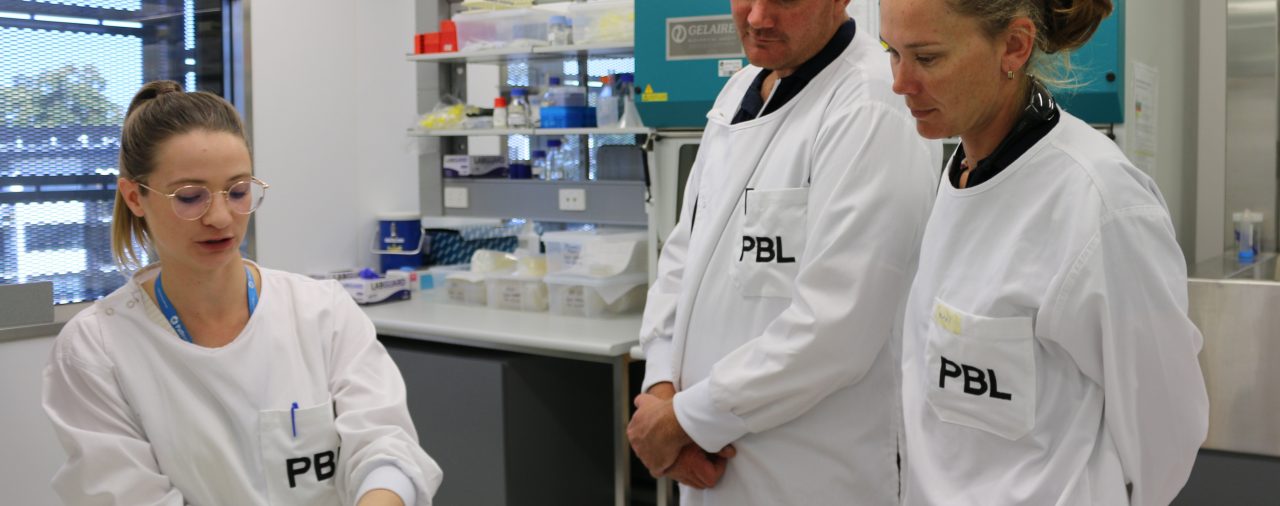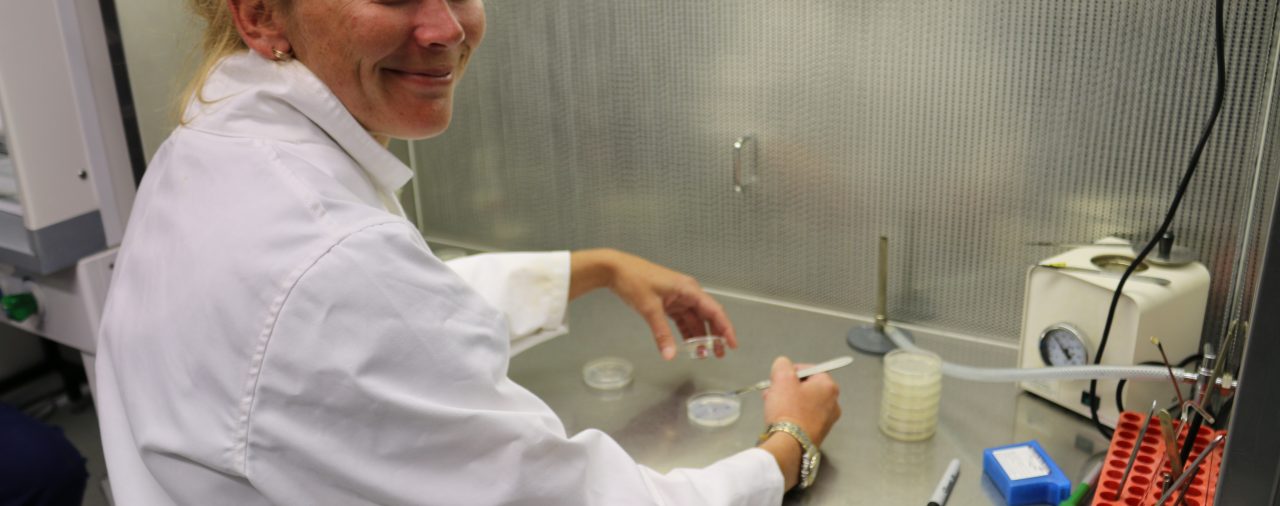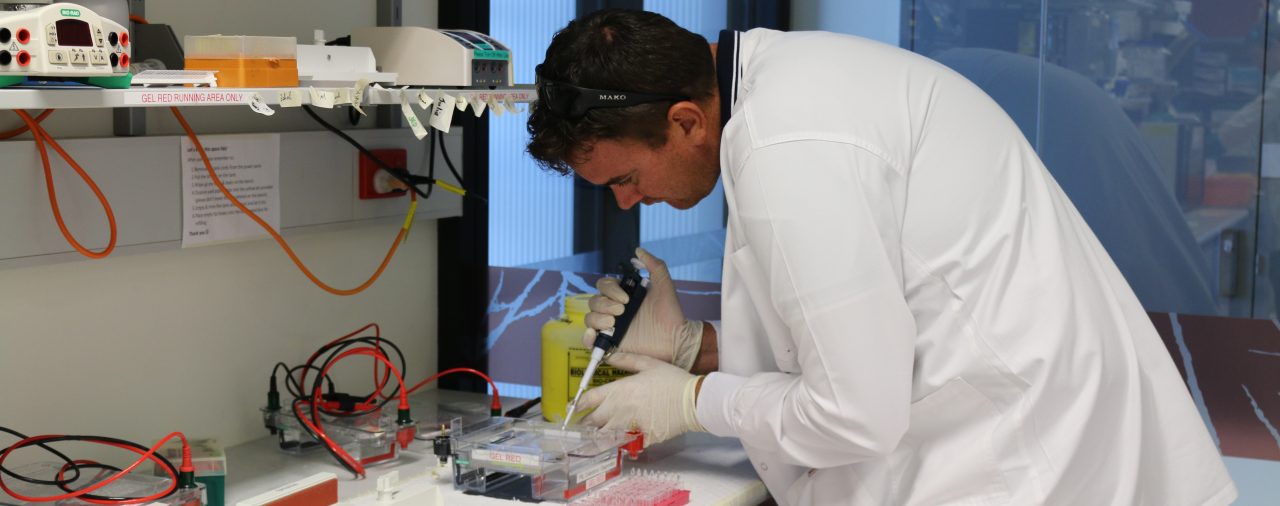By Deanna Belbin, Biosecurity Queensland
You may have already met Biosecurity Queensland surveillance officers, Chris Collier and Jess Portch, when they visit farms to check plants for signs of Panama TR4.
Earlier this year, they visited the Department of Agriculture and Fisheries (DAF) Plant Biosecurity Laboratory in Brisbane to meet the Panama TR4 diagnostic team and to see first-hand what happens to samples when they are tested for Panama TR4.
This was a great opportunity for the officers to take their knowledge from the paddock to the (agar) plate and pick the brains of some of the best in the business.
The Panama TR4 diagnostic team have a wealth of experience in their chosen fields.
Plant Biosecurity Laboratory manager Juliane Henderson, who leads the diagnostic team, spent 17 years with the Australian banana industry as a banana molecular pathologist for fungal, bacterial and phytoplasma diseases. Together with Wayne O’Neill, she diagnosed the first infested Panama TR4 property in Tully in 2015.
Paul Melloy’s extensive background in Fusarium in wheat and cotton was a natural fit for him to work as a technician on the TR4 team. His role was to assess plant samples arriving at the laboratory and undertake laboratory and molecular tests to assist in the diagnosis of TR4.
Paul also helped to write the protocols that led to the Plant Biosecurity Laboratory gaining national accreditation. Paul is now a postdoctoral researcher at the University of Southern Queensland working on a national disease modelling project for the grain industry.
Senior Scientist Elizabeth Czslowski is the newest member of the Panama diagnostics team and takes over the reins from senior scientist Wayne O’Neill who has returned to Agri-Science Queensland.
Liz was involved in designing the PCR molecular test which is now used to test for TR4. She went on to undertake a PhD in molecular plant pathology, focussing on identifying and understanding the genes of the fungus that cause Panama disease, including TR4.
This research helps us to understand how the fungus that causes Panama disease has evolved and why TR4 is so aggressive. Liz hopes that an increased understanding of the pathogen will help the scientific community better combat TR4 through improved diagnostics and the identification of banana cultivars that are resistant to Panama disease.
The diagnostic testing process for Panama TR4 includes:
• A visual assessment: plant tissue sample is cut open and examined for internal symptoms consistent with Panama TR4.
• Isolating fungi and culture: small pieces of the discoloured plant tissue are dissected from the sample and placed on agar gel plates for incubation over a number of days. Any plates which have growth of Fusarium fungi undergo further examination.
• Microscopic examination: Fusarium cultures are examined under a microscope to see if they are the species Fusarium oxysporum, which includes the Panama TR4 pathogen. If it is present, further tests are undertaken to see if it is the form that causes the disease.
• DNA based molecular tests: Fusarium oxysporum isolated from a sample is put through several DNA-based tests. These include PCR (polymerase chain reaction) tests and DNA sequencing. The PCR tests confirm that the isolate is a Fusarium oxysporum species and whether or not it is the TR4 strain of Panama disease. DNA sequencing is also performed on genes that have markers specific to the tropical race 4 strain of Panama disease.
• VCG test: for final confirmation, Fusarium oxysporum cultured from the plant sample is grown along with a tester culture derived from a known Panama TR4 fungus. It is then assessed using a VCG (vegetative compatibility group) test which will show if it is the same strain based on whether or not it reacts with the TR4 tester culture.
You can find more information on diagnosing plants with Panama TR4 on the Biosecurity Queensland website biosecurity.qld.gov.au and in the online grower kit fact sheet ‘Diagnosing plants for Panama TR4’.



